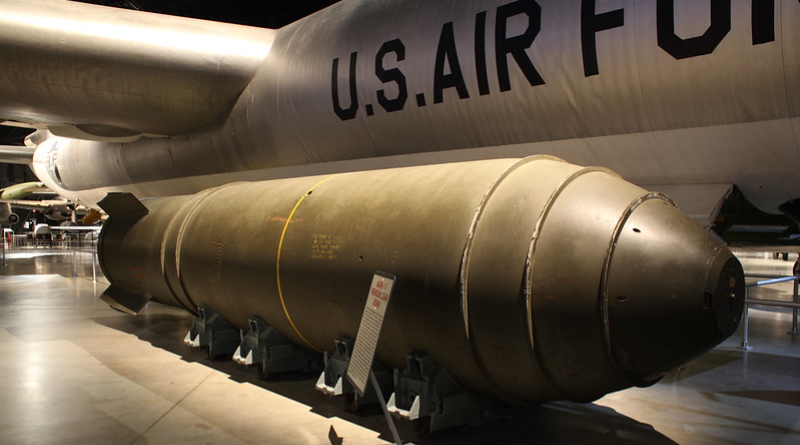Threat-Driven Consensus: The Congressional Commission Report on the U.S. Strategic Posture
By Natasha Wood, MALD 2024 Candidate, The Fletcher School
In October 2023, the Congressional Commission on the Strategic Posture of the United States released its final report, which was written and developed by a bipartisan group of 12 experts. Two Fletcher alumni also played an important role in the development of the Commission and the final report—Oleksandr Shykov (MALD 2018), who is a researcher at the Institute for Defense Analysis (IDA), and Jim Blackwell (PhD 1984), who advised IDA before and during the process.
IDA provided “wide-ranging and holistic support” to the report’s development and writing process, including analysis, logistics, briefings, and access to subject matter experts, said Shykov.
The Commission was created by the National Defense Authorization Act (Fiscal Year 2022) and charged with assessing U.S. nuclear strategy and associated posture. The report concludes that “America’s defense strategy must change in order to properly defend its vital interests” and urges policymakers to prepare for the possibility that the United States and its partners will need to deter and defeat both Russia and China simultaneously.
The report follows a yearlong review led by the Commission assessing the threats to U.S. national security and the policies and capabilities currently in place to combat those threats. The report clarifies that “the fundamentals of America’s deterrence strategy remain sound, but the application of that strategy must change to address the 2027-2035 threat environment.”
The Commission highlights these strategic changes in three topline recommendations: an integrated, whole-of-government strategy to address the threat environment, effective deterrence and defeat of simultaneous Russian and Chinese aggression in Europe and Asia using conventional forces, and a nuclear posture that can counter a combined Russian and Chinese threat.
The report includes a total of 81 recommendations pertaining to the U.S. strategy, strategic posture, nuclear security enterprise infrastructure and organization, non-nuclear capabilities, allies and partnerships, and risk reduction.
The report also reiterates the importance of the U.S. nuclear modernization Program of Record (PoR). Executing the PoR would entail replacing all U.S. nuclear delivery systems, updating nuclear warheads, and modernizing the nuclear command, control, and communications process. These modifications will target both Russian and escalating Chinese threats, considering the potential for China to deploy significant counterforce-capable missile forces, which could rival the threat posed by Russia to U.S. strategic nuclear forces. They will also ensure that the United States maintains an effective deterrence without relying on launching ICBMs under attack and adapt to advancements in Russian and Chinese integrated air and missile defense (IAMD).
Perhaps most notably, the conclusions of the report were reached by unanimous consensus. The 12 commissioners, appointed by both Republican and Democratic members of Congress, included Madelyn Creedon, former Principal Deputy Administrator of the National Nuclear Security Administration; former Senator Jon Kyl; Marshall Billingslea, former Special Presidential Envoy for Arms Control; and Rose Gottemoeller, former Under Secretary for Arms Control and International Security.
Shykov said he is often asked how the Commission reached a unanimous consensus on the U.S. strategic posture. He paraphrased one of the commissioners: “If you look at the threats that Russia is posing, what Russia is doing in Ukraine, its modernization and expansion of its nuclear arsenal, it’s very compelling. Not to mention what China is doing in East Asia and around the world writ large. It was pretty easy to come to a consensus when it came to the adversaries.”

